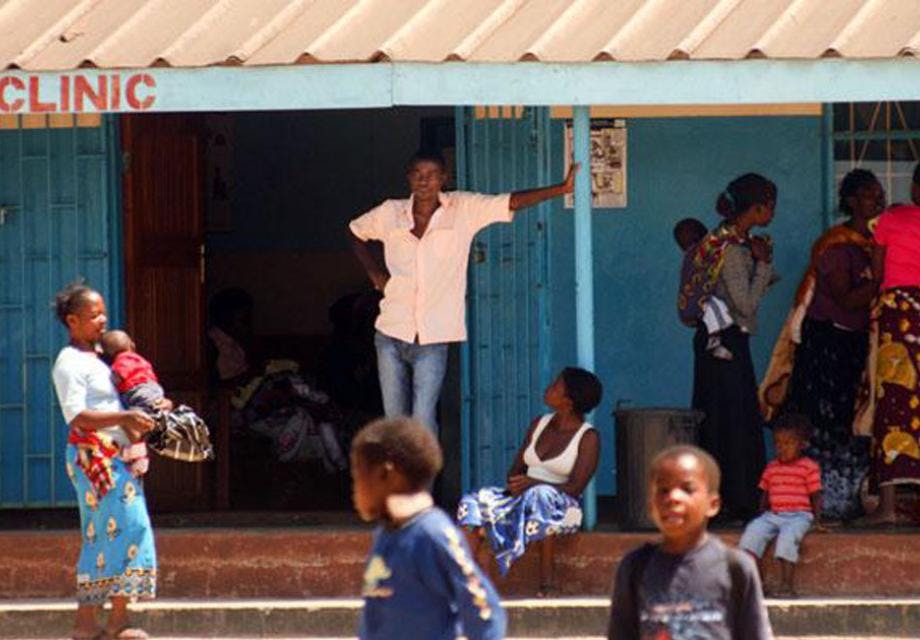Poverty holds back progress in prevention of mother-to-child transmission in Nigeria
Avert staff writers
21 October 2016
Women like Mrs. Chinwe face cycles of stigma and poverty that severely limit their access to HIV services, including the prevention of mother-to-child transmission services.
By Nnamdi Eseme
Mrs. Chinwe* from Anambra in south-Eastern Nigeria is a 30-year-old mother of three who is living with HIV: “I discovered I had HIV after my baby died. I had gone to the hospital to determine his cause of death when the doctor told me my baby had died of HIV-related causes and that I was living with HIV. I was devastated because I knew the stigma I was going to face from my husband and extended family. And just like I imagined, when I informed my husband I had HIV, he simply packed his things and left, abandoning me with three of our other children. Luckily for me, there is a clinic around that gives free antiretroviral drugs. I visit the clinic regularly to collect my drugs and that is why I am alive today.”
Chinwe’s story highlights the effect of mother-to-child transmission of HIV in Nigeria. The first reported case of AIDS in Nigeria was found in a 13-year-old girl in 1986. Since then, several HIV surveys of pregnant women have recorded persistently high HIV prevalence. Mother-to-child transmission accounts for over 90% of new HIV infections among children. According to a UNICEF report, only 13% of pregnant women in Nigeria were tested for HIV in 2009. Even though this number has increased, many pregnant women still don’t get tested in Nigeria. In September 2015, the World Health Organisation released new guidelines recommending lifelong antiretroviral treatment for all pregnant and breastfeeding women living with HIV.
Why women and girls stand a higher risk of HIV infection in Africa
According to the UNAIDS 2016 global AIDS update, in sub-Saharan Africa, harmful cultural practices such as delivery by unskilled birth attendants, poor access to education and sexual and reproductive health services and poverty are possible causes of the increased HIV risk in young women and adolescent girls. The report also states that adolescent girls and young women accounted for 25% of all new HIV infections among adults in 2015, and women accounted for 56% of all new HIV infections among adults.
Doctor Odenigbo Chigozie, a medical practitioner in a private hospital in Anambra says: “Nigeria still records cases of mother-to-child transmission of HIV for several reasons one of which is the poor socio-economic status of women and their families. Many poor families cannot afford the costly infant formulas especially with the current harsh economic realities. As a medical practitioner, we advise women to exclusively breastfeed their newborns for at least six months but where the mother is living with HIV, exclusive non-breastfeeding is advised because the risk of the child being infected outweighs the benefits associated.”
Poverty, lack of access to comprehensive HIV information and healthcare services and harmful cultural practices all contribute to new cases of mother-to-child transmission of HIV. Economically stable mothers are able to afford infant milk formulas and supplements in place of breast milk while poor mothers cannot. So, poor mothers are left with no option than to exclusively breastfeed their babies thereby increasing the risk of HIV transmission through the breast milk. If they don’t breastfeed their babies, their babies could die of malnutrition.
Government’s response
The prevention of mother-to-child transmission (PMTCT) of HIV is one of the government’s responses to the HIV epidemic and it is done through the health sector. The PMTCT programme started with the inauguration of the Prevention of Mother-To-Child Transmission Task Force in December 2000 and services in Nigeria began as a pilot project in July 2002.
The goal, objectives and targets of the programme have undergone some review over time in line with national realities and international demands such as the global initiative for the elimination of mother-to-child transmission of HIV by the year 2015. The initiative has recorded some success however, for Nigeria, there are areas that need to be improved upon. A UNAIDS report states that Nigeria has the second largest number of new HIV infections among children with new HIV infections declining by just 15% since 2009.
A recent press release by the National Agency for the control of AIDS states that it has developed a strategic approach of rapid scale-up of PMTCT in the 12 plus 1 high burden states in Nigeria, aiming to saturate them with PMTCT services, as they attribute for 70% of the HIV/AIDS burden in Nigeria.
Doctor Chigozie says: “With the current pace at which the government’s PMTCT plan is going, I doubt if Nigeria can totally eradicate mother-to-child transmission before 2030. The government should commit more to the plan and make PMTCT information as well as antiretroviral drugs more accessible to pregnant women living with HIV. If this is done, not only would Nigeria completely eradicate MTCT of HIV but the government would also have fulfilled part of goal three of the sustainable development goals (SDGs).”
Get our news and blogs by email
Keep up-to-date with all our latest news stories and blogs by signing up to the Be in the KNOW news digest.
